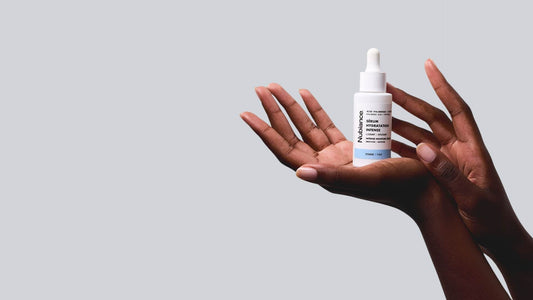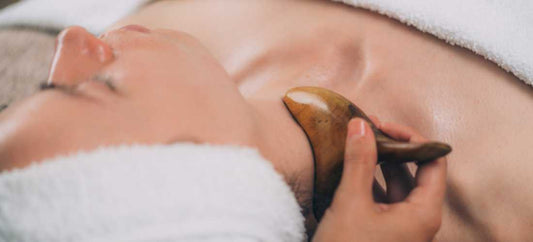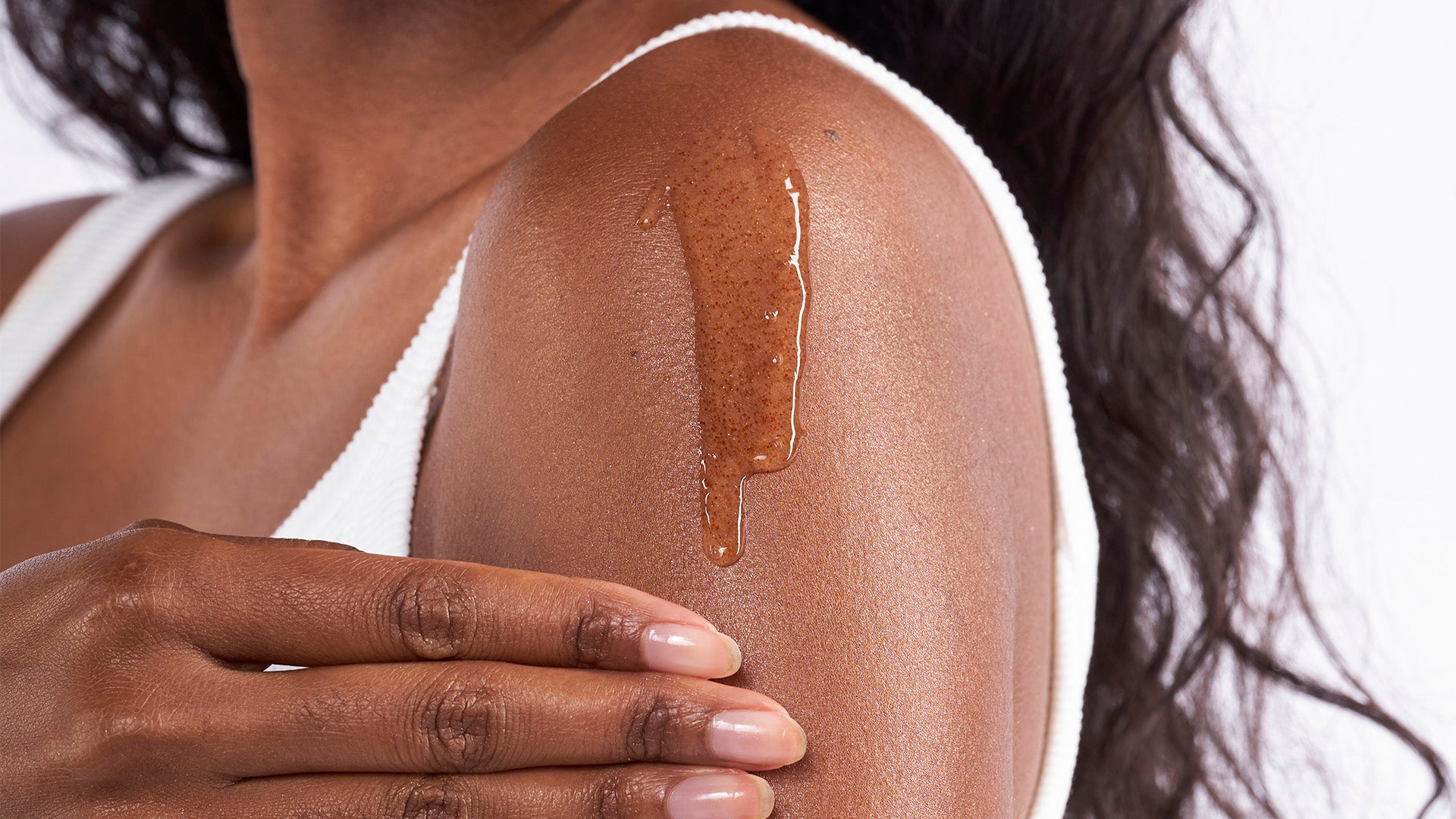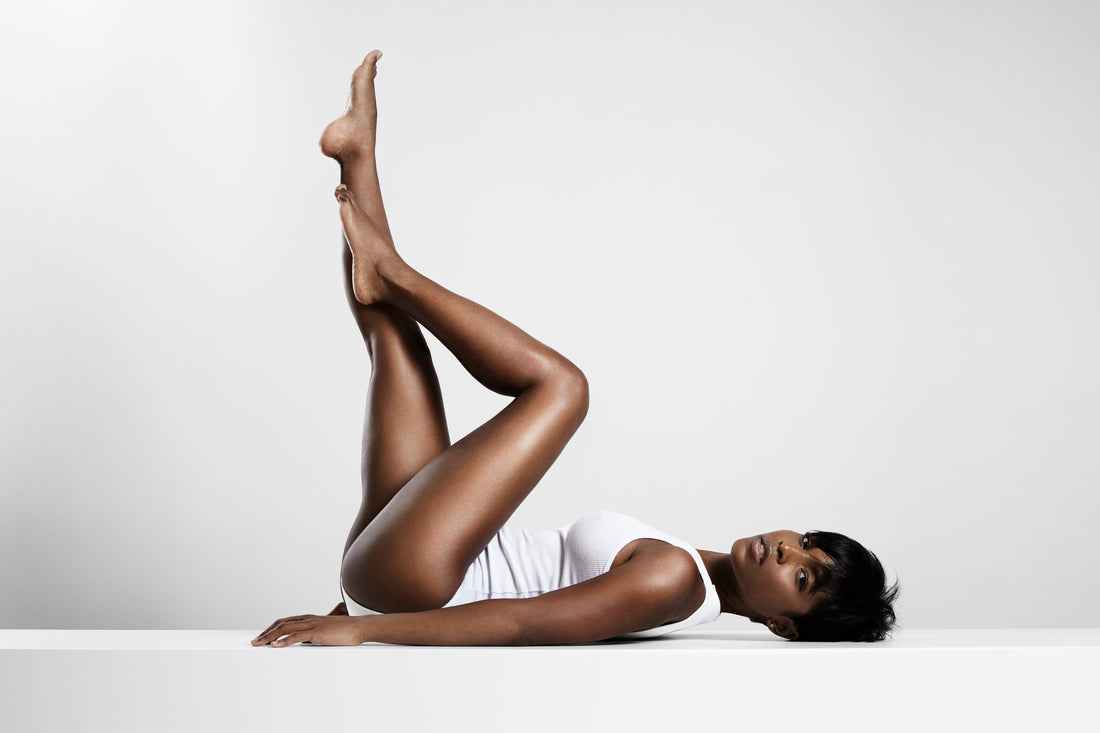
How to treat keratosis pilaris on black skin?
Partager
At the sight of this name, you may be frowning. This term is rarely used in everyday language. And yet, keratosis pilaris is a frequent dermatological disease in children, adolescents and, in some cases, in adults. To date, it affects more than one in four people. How does keratosis pilaris on black skin manifest itself? What are the causes ? Are there treatments? We tell you everything in this article!
What is keratosis pilaris?
Keratosis pilaris is the scientific name given to the " strawberry skin effect " or " goosebumps ". It is a mild skin disease causing small pimples. These tiny rough bumps can be accompanied by itching and redness. Sometimes it appears as spots and whiteheads.
In the majority of cases, it is visible on the arms, thighs and buttocks. However, some people may get it on their face. In general, it disappears over time and subsides in summer due to the effects of the sun. In some cases, it can stay on the skin for life.
It frequently appears during childhood and adolescence, and persists into adulthood. Studies show that women are more affected by this rash than men.
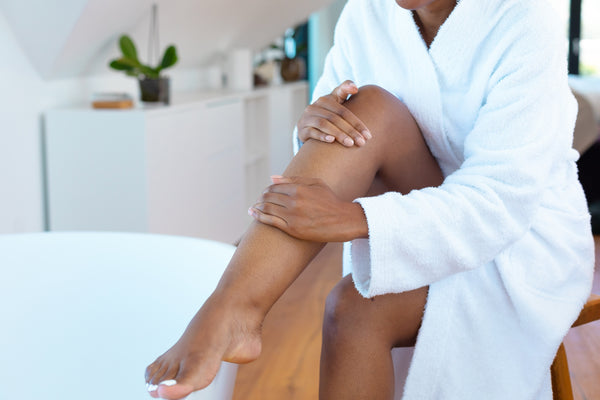
What causes keratosis pilaris?
Keratin is a protein that protects the skin from external aggressions . When there is an overproduction of keratin protein in the hair follicles , it causes hard plugs, hence the appearance of small bumps. The cause of this overproduction is unknown.
Keratosis pilaris also has a genetic component. The majority of people with this skin condition have a family history.
According to the American Academy of Dermatology Association, the people most likely to be affected by this pathology are those who suffer from:
- asthma;
- excess weight;
- hay fever;
- melanoma (malignant tumor of the pigment system);
- ichthyosis vulgaris (a rare condition that manifests as dry, scaly skin)
- and eczema .
👉🏾 To learn more about eczema symptoms on black skin, read this article .
What are the symptoms and different types of keratosis pilaris?
In general, the signs that are observed in people with this skin condition are:
- rough, dry skin;
- itches ;
- a goosebumps effect;
- small buttons of the same color as the complexion.
In addition to these symptoms, dermatologists identify three types of keratosis pilaris :
- Red keratosis pilaris : they are associated with inflammation and redness;
- Atrophic keratosis pilaris : the pores are clogged and cause hair to disappear;
- Acquired keratosis pilaris : these appear as a result of other dermatological diseases such as eczema, psoriasis , and scurvy, a disease present in people who suffer from vitamin C deficiencies.

How to get rid of keratosis pilaris on black skin?
As we mentioned above, this benign pathology appears in childhood and then disappears over the years. Nevertheless, if you notice that it is still visible on your body and that it represents an embarrassment at the aesthetic level, here are some tips to alleviate it.
Avoid taking long hot baths
It's hard to deny that long, hot baths are a great way to soothe the body…especially after a long day. However, spending too much time in water makes the skin dry and causes a flare-up of keratosis pilaris . The ideal would be to limit the duration of your bath to 10 minutes and to use lukewarm water.
Prevent skin dryness
We suggest using products that are gentle and moisturizing on the skin. A surgras soap composed of nutritious agents such as sweet almond oil cleanses the skin without drying it out.
After your shower, remember to apply a moisturizer. Formulated with shea butter, our HRB-3 moisturizing milk deeply nourishes the skin and provides optimal hydration over time. We suggest you apply it in the morning and in the evening, after showering.
Eliminate aggressive shaving methods
Exit the razor and the depilatory cream! In the long run, these shaving methods stimulate the appearance of small unsightly bumps and the strawberry skin effect . In addition, the darker the complexion, the more the imperfections are visible.
Perform gentle scrubs on the skin
Exfoliation eliminates dead cells on the surface of the epidermis. It is recommended to do it once or twice a week. Our Exfoclear face and body exfoliating gel formulated with apricot powder refines skin texture. Over time, you will find that it has a smoother appearance.
👉🏾 Understand the importance of scrubs with the article: all about exfoliation !
Treat the problem with the laser
This is the most expensive solution, but also the most effective. When natural methods are not enough, you can consider this option. The laser removes excess keratin that causes tiny bumps on the surface of the skin.
Consult a doctor or dermatologist
If you wish to obtain a rapid diagnosis and appropriate treatment, do not hesitate to make an appointment with a healthcare professional.
What makes keratosis pilaris worse?
Keratosis pilaris on black skin is aggravated when the humidity level is low, which is the case in winter. It attenuates when the humidity is high.
Apart from itching and redness, keratosis pilaris is harmless and asymptomatic. Nevertheless, from an aesthetic point of view, it can be a source of complexes. To get rid of it, you must moisturize your skin with adequate products to soften the horny layer , then gently exfoliate it. If this disease persists, the laser is a solution.


